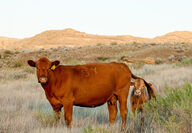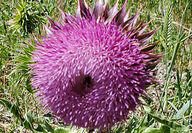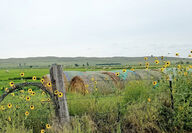Sorted by date Results 1 - 5 of 5

Pregnancy detection in replacement heifers or cows is a tool producers can use to increase profit. Traditionally, cows and replacement heifers are pregnancy tested in the fall of the year, and then non-pregnant and cull cows are marketed. This is also when cull cow prices are typically at their lowest. Timing of Pregnancy Test Ultrasound and blood tests can detect pregnancy in cows as early as 25-30 days. For cows to be identified as pregnant utilizing the palpation method, cows need to be at...

Lincoln, Neb. -Late May and June are the months when we frequently see both native and non-native forbs begin to flower in range and pasture. This is a good time of the year to be on the alert and look out for these "pretty flowers" and for other plants that you may not recognize. Seeing something you haven't seen before? Go check it out. Those "pretty flowers" or plants you don't recognize may be a plant that is an invasive species. Early detection and rapid response are critical to helping to...

In parts of the High Plains region, recent developing dry conditions are starting to raise concerns that we may see reduced forage production from pasture and rangelands as we move on into the rest of the spring and summer. The www.weather.gov/gid/NebraskaPrecipitation map shows many parts of the Sandhills and Panhandle regions receiving below-average precipitation for the last 30 days. This time frame is critical for precipitation that drives cool-season forage production on rangeland and...
Drought conditions across much of Nebraska this summer, most severe in the west, have significantly reduced forage production from pasture and rangeland as well as hay ground and crop residue. Cow-calf producers will face a challenge in meeting the feed needs of the herd from now until next spring. When making a plan for a forage shortage, producers should remember these five steps: Calculate feed needs. Accurately assess the feed needs of all the cattle that are planned to be part of the operation from now into next spring. This is an...
The southern Panhandle is in the second consecutive spring of drought conditions. Precipitation September 1 to April 15 for the Southern Nebraska Panhandle is less than half of normal for this time period. The University of Nebraska-Lincoln Extension CropWatch website has weather information that shows precipitation summaries for all of Nebraska. This summary shows recent historic precipitation amounts and compares them to long term averages at locations throughout the Panhandle. Lack of precipitation beginning in the fall of 2011 has resulted...